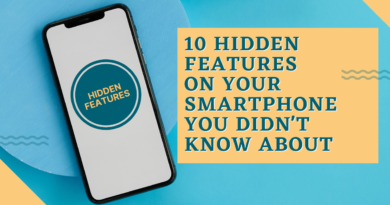How to Keep Your Phone Secure from Malware and Hackers
Our cellphones, which carry a lot of private and sensitive information, have merged seamlessly into our daily lives. Unfortunately, malware and hackers have turned them into top targets as well. It’s critical to have strong security measures in place to protect your phone and your data. This article will cover practical methods for protecting your phone from malware and hackers and assuring your online security.
1. Update your Operating System and Apps
One of the simplest and most effective measures to protect against potential security threats is to consistently update both your phone’s operating system and its applications. Such updates often come equipped with patches for known vulnerabilities and security enhancements. For optimal defense, either set your device to update automatically or periodically inspect for available updates.
2. Install a Reliable Security App:
Protecting your phone requires downloading a reliable mobile security app. Apps with features like malware detection, ongoing security, and anti-phishing capabilities should be sought out. Avast Mobile Security, Norton Mobile Security, and Bitdefender Mobile Security are a few well-known alternatives. Update your security program frequently to take advantage of the most recent threat definitions.
3. Be Cautious with App Downloads:
Apps should only be downloaded from reputable websites, such as the Google Play Store or Apple App Store. Be cautious when downloading popular apps from unofficial app stores or websites because they can be infected with viruses. Before installing, make sure the app is real and doesn’t ask for access to your data that isn’t essential by reading user reviews and looking at the app’s permissions.
4. Exercise Caution with Links and Emails:
Don’t click on shady links that are provided to you via text, email, or social media. These links can take you to phishing websites designed to steal your personal data. Be extra wary about emails from unfamiliar senders, especially if they request sensitive information or contain unexpected attachments. When in doubt, double-check the source before acting.
5. Use Strong and Unique Passwords:
For all the apps and accounts connected to your phone, create secure and distinctive passwords. Avoid using obvious passwords or easily guessable personal information. To create and securely store complicated passwords, think about utilizing a password management tool. When it’s feasible, use two-factor authentication (2FA) to increase security.
6. Be Mindful of Public Wi-Fi:
Public Wi-Fi networks are frequently unprotected and open to hacker attack. While on public Wi-Fi, steer clear of checking sensitive details such as bank accounts or personal emails. If there’s a need to connect through such networks, think about deploying a virtual private network (VPN). This will scramble your online activities, keeping them hidden from unwanted viewers.
7. Examine App Access Rights:
Periodically check the access granted to apps on your phone. Certain apps may request undue rights to elements like your contacts, camera, or microphone. Decline any access that appears unrelated or overly extensive for the app’s functionality. For those on iOS, permissions can be adjusted in the privacy settings, while Android enthusiasts can tweak app rights via the settings option.
8. Backup your Data
Regularly back up your phone’s data to protect against potential data loss or ransomware attacks. Leverage cloud services or link your phone to a PC to save copies of critical documents, images, and contact details. Should you face a cyber threat or a malicious intrusion, this ensures you can retrieve your essential data without significant losses.
Also Read: Best Cloud Storage Services





Exxcellent way oof describing, annd nic paragraph to obtai facts regarding my presentation topic, which i amm
goinhg tto presednt in institution of higher education.
It was great seeing how much work you put into it. The picture is nice, and your writing style is stylish, but you seem to be worrying that you should be presenting the next article. I’ll almost certainly be back to read more of your work if you take care of this hike.